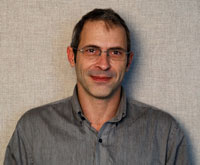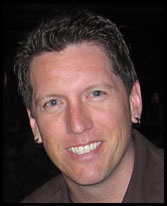
For Release: August 23, 2012
133rd AES Convention Tutorials – From ‘Noise On The Brain’ To Getting The Sound Out Of (And Into) Your Head
Social Media For Engineers – Large & Small Room Acoustics – Mastering For Vinyl
SAN FRANCISCO: “The 133rd AES Convention is focused on ‘Listening, Learning and Connecting,’ reports Convention Co-Chair, Valerie Tyler. Our Tutorial Program is particularly attuned to that goal. Co-Chairs Vene Garcia and Mike Wells have devoted extensive time and energy to developing a diverse and vigorous program. Their work is bound to have a lasting impact on attendee careers.”
“Our game plan was to cover as many significant issues as time would allow,” Vene Garcia remarked. “We also tried to balance the presentations with traditional and contemporary subject matter. This approach is exemplified by Bobby Owsinski’s Social Media event and Scott Hull’s Vinyl Mastering presentation.”
“Presentations on Large and Small Room Acoustics and Sound System Intelligibility actually represent a mini-track on room acoustics,” Mike Wells adds. “We believe this year’s Tutorials will genuinely benefit attendees.”
133rd AES Convention Tutorials Include:
Social Media For Engineers And Producers: Bobby Owsinski (producer/best-selling author – Facebook, Google+, Twitter and YouTube are important for developing a fan base or client list, but without the proper strategy they can prove time consuming and ineffective. Engineers, producers, and musicians will find invaluable techniques for efficiently utilizing social media as a promotional tool. Topics include: Your mailing list – old tech, new importance; Social Media management strategies; Optimizing your YouTube presence; The secret behind successful tweets and …What’s next?
Small Room Acoustics: Leading acoustic consultants Peter Mapp and Ben Kok will discuss basic small room acoustics. Issues related to absorption, reflection, diffraction, diffusion and how to use it, along with details on low frequency treatment. Recording and control room specifics and differences will be identified, including considerations for loudspeaker and microphone placement.
Large Room Acoustics: Diemer de Vries, Delft University of Technology Netherlands, (ret) & AES past president – Traditional and modern methods for describing the acoustical properties of 'large rooms' will be discussed. Theoretical models, measurement techniques, and the link between objective data and human perception will be covered. What issues need be addressed for a superior assessment? Reverberation time, the impulse response? Or, is there even more to take into account?
Sound System Intelligibility: Peter Mapp. Ben Kok – This comprehensive assessment of speech intelligibility and measurement will encompass how room acoustics can affect intelligibility, and measures that can optimize sound system intelligibility. Practical real world problems and solutions will be discussed in depth.
Mastering For Vinyl – Today's Challenges: Scott Hull, owner Masterdisk – What has to be considered when you mix/master your music for vinyl? This Tutorial will dig deep into quality control issues and introduce sure ways to sound great on your first pressing. Topics include: Why contemporary CD mastering techniques do not produce the best sounding vinyl records; Long Sides; The relationship between Volume, Duration and Quality; The Turntable; Quality control: mixing – mastering – pressing; and, the realities of the current vinyl market.
Binaural Auditory Models: Ville Pulkki, Aalto University, Helsinki: The principles of brain mechanisms of binaural hearing have been debated extensively. In the 1990s, common thinking was, that human binaural decoding is based on delay lines and coincidence counters. Subsequent neurophysiological findings questioned the existence of such delay lines. This tutorial will introduce the basic principles of most common binaural auditory models, and review recent improvements in the models.
Noise on the Brain Part II – Higher Fidelity: Poppy Crum – Did you know that drinking a glass of orange juice every day may protect your hearing? Most discussions of hearing damage focus on what happens to the cochlea and inner ear. While this understanding is crucial to predicting and avoiding trauma that can lead to hearing loss. Acoustic and chemical stimuli can have significant effects on higher brain areas. While this understanding is crucial to predicting and avoiding trauma that can lead to hearing loss, acoustic and chemical stimuli can have significant effects on higher brain areas. This session will explore new research into acoustic and chemical trauma, how this damage manifests as changes in hearing sensitivity, cognition, and the experience of tinnitus.
Getting the Sound Out Of (And Into) Your Head – The Practical Acoustics of Headsets: Christopher J. Struck (CEO/Chief Scientist CJS Labs, SF) – Exploring the electroacoustics of headsets and other head-worn devices, this presentation will review issues ranging from Insertion Gain, to appropriate instrumentation, including ear and mouth simulators. Boom, close-talking, and noise-canceling microphone tests will be addressed, as will relevant standards, and USB, and Bluetooth wireless devices.
An overview of Audio System Grounding and Interfacing: Bill Whitlock, President/Chief Engineer, Jensen Transformers, Inc. Equipment makers like to pretend the problems don’t exist, but unbalanced interfaces are exquisitely vulnerable to noise due to an intrinsic problem. Although balanced interfaces are theoretically noise-free, they’re widely misunderstood by equipment designers, which often result in inadequate noise rejection in real-world systems. Also discussed are unbalanced-to-balanced connections, RF interference and, power line treatments. Some “cures” are both illegal and deadly.
Photo 1: AES 133rd Convention Tutorial Co-Chair Vene Garcia
Photo 2: AES 133rd Convention Tutorial Co-Chair Mike Wells
The 133rd AES Convention will be held in SF’s Moscone Center, Oct. 26-29.
###
The Audio Engineering Society was formed in 1948 by a group of concerned audio engineers. The AES counts over 14,000 members throughout the U.S., Latin America, Europe, Japan and the Far East. The organization serves as the pivotal force in the exchange and dissemination of technical information for the industry. For additional information visit http://www.aes.org



